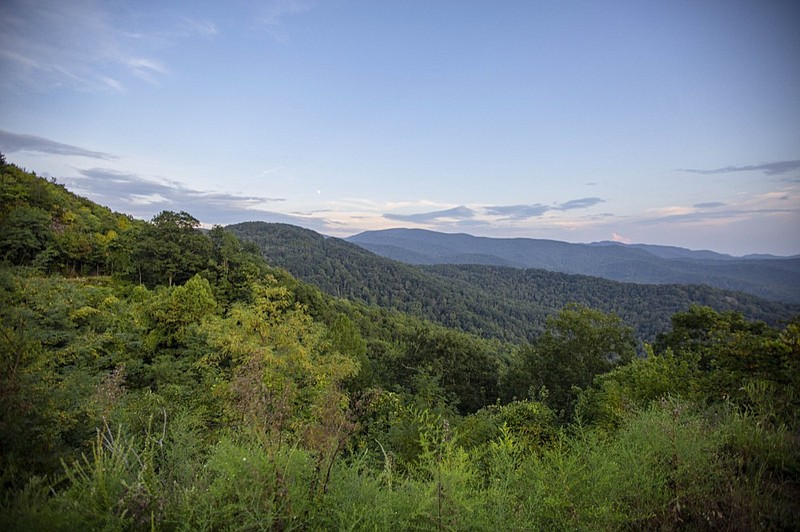(Editor's note: This is one in an occasional series)
Dr. James Livingood, distinguished UTC history professor, discussed the evolution of Cherokee ways in the early 1800s in excerpts from his "Chattanooga: Illustrated History:"
"The subdued splinter tribe of Chickamaugas returned in the autumn of their defeat to membership in the Cherokee Nation amid appropriate ceremony. Although knowledge of their ancestors was dimly maintained in oral tradition, the Cherokee continued to call themselves Ani-Yunwija, 'Principal People.' Under mounting pressure they had sold much of their homeland and drifted to new locations to the southwest in lower East Tennessee and north Georgia.
"Ross's Landing after 1815 became a major economic hub, and New Echota, in northern Georgia, the Indian capital in 1788. The Cherokee lifestyle rapidly changed as the natives made an effort to master the culture of the whites. Adapting nimbly to new ideas, they saw their former economy give way to agriculture and trade.
"The United States Indian agent, Connecticut-reared Jonathan Meigs, contributed materially to this after his 1801 appointment. For the next 22 years he gave benevolent guidance to the Cherokee from his first residence at Southwest Point where the nearby village of Kingston [Tennessee] grew up, and after 1807 at the Hiwassee Garrison or Agency within a convenient journey from Ross's Landing.
"About 1800 the government, as stipulated in land treaties, began annual annuity payments in basic tools and in craft instruction in smithing, milling, tanning, and other skills. A native spokesman in 1826 boasted of the results. He found the Cherokee had 22,000 cattle, 7,600 horses, 46,000 swine, 2,500 sheep, 762 looms, 2,488 spinning wheels, 172 wagons, 2,942 plows, 10 sawmills, 31 grist mills, 62 blacksmith shops, 8 cotton machines, 18 schools, and the same number of ferries.
"Prior to the time of this inventory, the Cherokee built roads through the Nation that connected the isolated farming areas of East Tennessee and the Cumberland settlements with the markets of the Deep South. Over them the first vehicular traffic in the region's history carried men and produce, but it was frequently delayed by herds of swine, cattle, mules, and horses or flock of turkey making their way to an exchange mart under their own power. From the roads also came fabricated tales of ruffians, highwaymen, and carnage.
"The local section of the Georgia Road into Middle Tennessee, sometimes known as the Nickajack Road, reflected the economic opportunities of wheeled traffic. John Brown's ferry tavern built in 1803 drew trade from north of the Tennessee River. On Chattanooga Creek Daniel Ross settled; he operated a stand while living as a patriarch amid his orchards, deerskin tanyard, mills, stables, and Negro cabins. A visitor in 1820 noted that 'from his manners and information he might have been living the last twenty years in England or Scotland instead of among the Cherokee.'
"John McDonald and his family returned to an earlier homesite at Poplar Springs in the gap of the Missionary Ridge, which in time became known as Rossville. At his general store the stage changed horses and a semi-weekly mail passed from Nashville to Augusta, Georgia. In 1817 a post office opened in Rossville, although it was deep in Indian country, under a favorite grandson, John Ross.
"John Ross's first education was acquired at his father's home, but he later attended a frontier academy; he also got practical mercantile experience from clerking at Kingston. Although he never spoke Cherokee frequently and never learned their written language, Ross gained the trust of the Cherokee in his unfailing devotion to his homeland, in his enterprise, and in his integrity. In 1813 he married Elizabeth Brown Henley, called 'Quatie' in Cherokee, with whom he had six children. Most likely she was of mixed blood but she was a zealous Cherokee and always used the language of the tribe. Although she was a Moravian church member, her husband later joined the Methodist denomination. Shortly after his marriage, Ross and his brother Lewis founded their mercantile operations on the river at Ross's Landing, which became a customary stop on the Georgia Road from Nashville to Augusta."
Frank "Mickey" Robbins, an investment adviser at Patten & Patten, edited this article.
